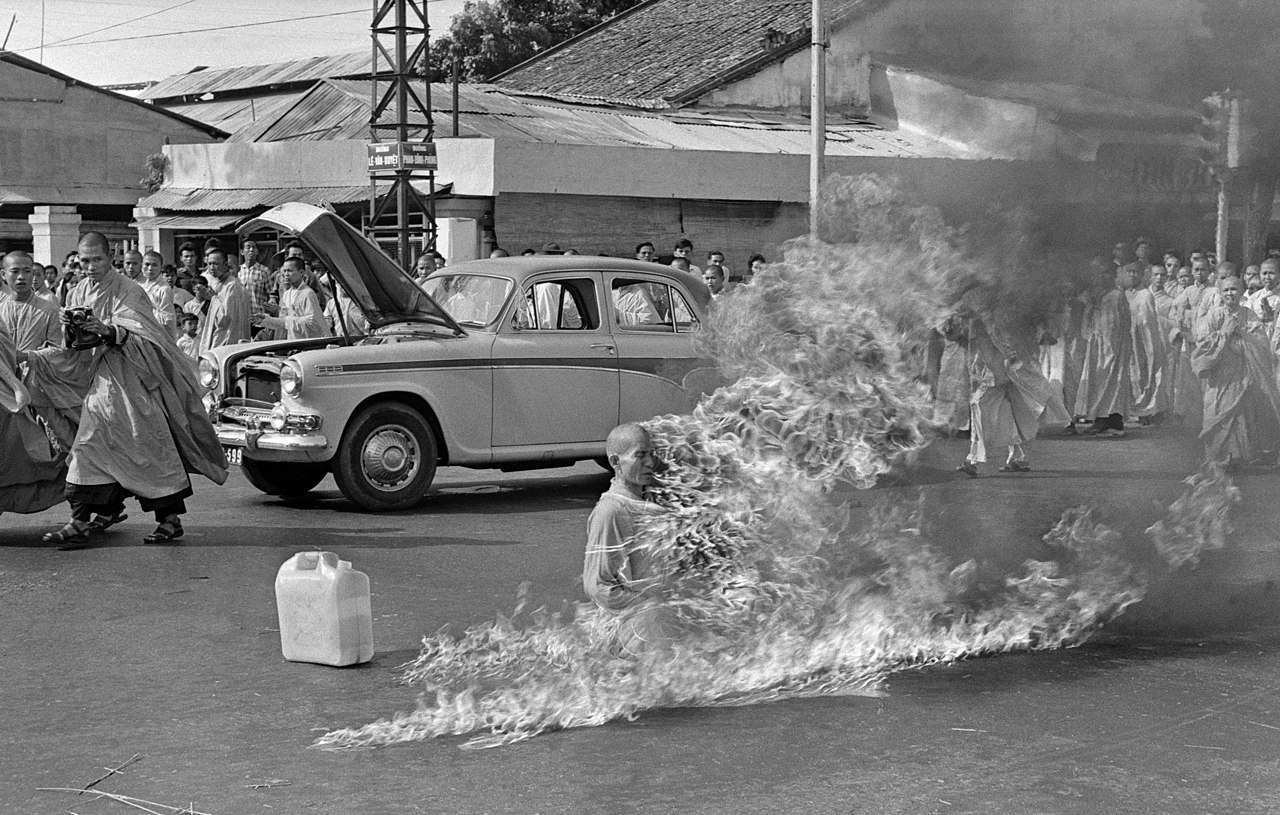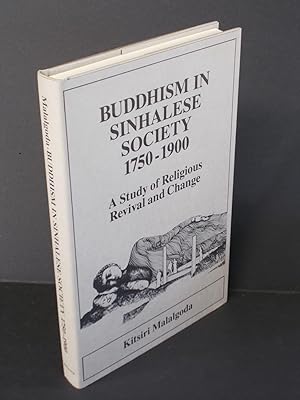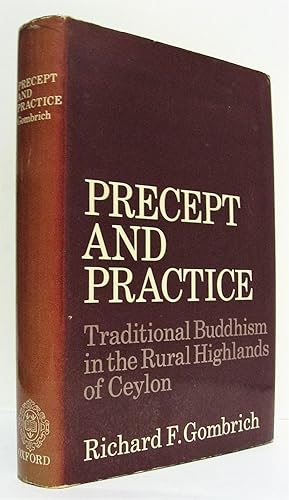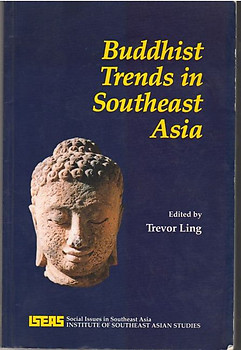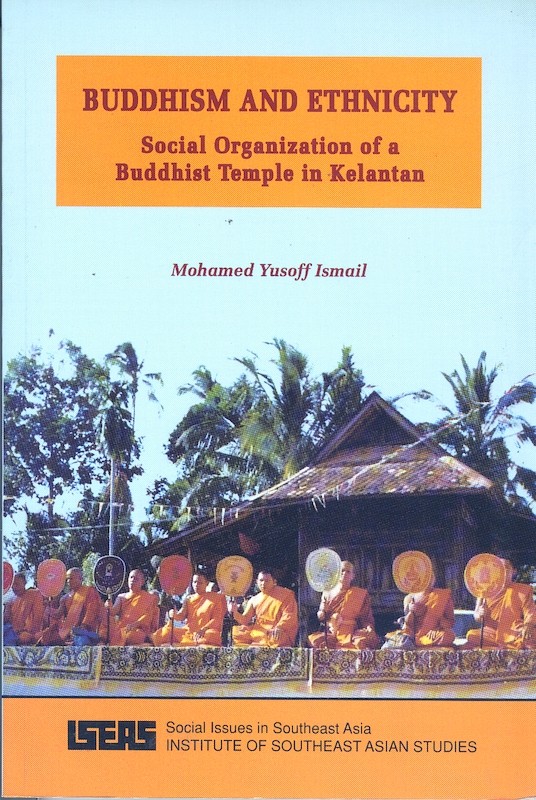Buddhism: Theravada: Southeast Asia & Sri Lanka

Theravāda Buddhism: Southeast Asia & Sri Lanka

Drawing on extensive ethnographic fieldwork in Cambodia, Erik W. Davis radically reorients approaches toward the nature of Southeast Asian Buddhism's interactions with local religious practice and, by extension, reorients our understanding of Buddhism itself. Through a vivid study of contemporary Cambodian Buddhist funeral rites, he reveals the powerfully integrative role monks play as they care for the dead and negotiate the interplay of non-Buddhist spirits and formal Buddhist customs. Buddhist monks perform funeral rituals rooted in the embodied practices of Khmer rice farmers and the social hierarchies of Khmer culture. The monks' realization of death underwrites key components of the Cambodian social imagination: the distinction between wild death and celibate life, the forest and the field, and moral and immoral forms of power. By connecting the performative aspects of Buddhist death rituals to Cambodian history and everyday life, Davis undermines the theory that Buddhism and rural belief systems necessarily oppose each other. Instead, he shows Cambodian Buddhism to be a robust tradition with ethical and popular components extending throughout Khmer society.
This book is a rare and timely contribution to our understanding of religious culture in Laos and Southeast Asia. Most often studied as a part of Thai, Vietnamese, or Khmer history, Laos remains a terra incognita to most Westerners. With its overview of Lao Buddhism and analysis of how shifting political power--from royalty to democracy to communism--has impacted Lao religious culture, this book offers an integrated account of the entwined political and religious history of Laos from the fourteenth century to the contemporary era. Holt advances the provocative argument that common Lao knowledge of important aspects of Theravada Buddhist thought and practice has been heavily conditioned by an indigenous religious culture dominated by the veneration of phi, spirits whose powers are thought to prevail over and within specific social and geographical domains. The enduring influence of traditional spirit cults in Lao culture and society has brought about major changes in how the figure of the Buddha and the powers associated with Buddhist temples and reliquaries--indeed how all ritual spaces and times--have been understood by the Lao. Despite vigorous attempts by Buddhist royalty, French rationalists, and most recently by communist ideologues to eliminate the worship of phi, spirit cults have not been displaced; they continue to persist and show no signs of abating. Not only have the spirits resisted eradication, but they have withstood synthesis, subordination, and transformation by Buddhist political and ecclesiastical powers.
Cambodian Buddhism: History and Practice by Ian Harris. Honolulu: University of Hawai'i Press, 2008.
The study of Cambodian religion has long been hampered by a lack of easily accessible scholarship. This impressive new work by Ian Harris thus fills a major gap and offers English-language scholars a book-length, up-to-date treatment of the religious aspects of Cambodian culture. Beginning with a coherent history of the presence of religion in the country from its inception to the present day, the book goes on to furnish insights into the distinctive nature of Cambodia's important yet overlooked manifestation of Theravada Buddhist tradition and to show how it reestablished itself following almost total annihilation during the Pol Pot period. Historical sections cover the dominant role of tantric Mahayana concepts and rituals under the last great king of Angkor, Jayavarman VII; the rise of Theravada traditions after the collapse of the Angkorian civilization; the impact of foreign influences on the development of the nineteenth-century monastic order; and politicized Buddhism and the Buddhist contribution to an emerging sense of Khmer nationhood. The Buddhism practiced in Cambodia has much in common with parallel traditions in Thailand and Sri Lanka, yet there are also significant differences. The book illustrates how a distinctly Cambodian Theravada developed by accommodating itself to premodern Khmer modes of thought.
This book examines modern and premodern Buddhist monastic education traditions in Laos and Thailand. Through five centuries of adaptation and reinterpretation of sacred texts and commentaries, McDaniel traces curricular variations in Buddhist oral and written education that reflect a wide array of community goals and values. He depicts Buddhism as a series of overlapping processes, bringing fresh attention to the continuities of Theravada monastic communities that have endured despite regional and linguistic variations. Incorporating both primary and secondary sources from Thailand and Laos, he examines premodern inscriptional, codicological, anthropological, art historical, ecclesiastical, royal, and French colonial records. By looking at modern sermons, and even television programs and websites, he traces how pedagogical techniques found in premodern palm-leaf manuscripts are pervasive in modern education. As the first comprehensive study of monastic education in Thailand and Laos, this work will appeal to a wide audience of scholars and students interested in religious studies, anthropology, social and intellectual history, and pedagogy.
In this journey through Cambodia and Southeast Asia, intrepid traveler and scholar Stephen T. Asma explores and explains the basics of Buddhism. After the Vietnam War, the communist Khmer Rouge outlawed the practice of Buddhism in Cambodia. To enforce their decree they burned temples and jailed monks. Twenty years later, the newly reopened Buddhist Institute in Phnom Penh invites the young American professor Stephen Asma to come teach Buddhism to its students to help resurrect the ancient religion after years of suppression. The oldest and purest form of Buddhism, Theravada, once flourished in Southeast Asia, and Asma scours the countryside to find its traces. He climbs mountains to meditate in temples housing golden Buddhas and treks through jungles in pilgrimage to sites swallowed up by overgrown banyan trees. What he finds has little in common with the popular forms of Buddhism practiced in America. Buddhism Cambodia-style is thoroughly intertwined with a sturdy set of Hindu fertility rituals and popular beliefs in ancient local spirits who enjoy gifts of flowers, fruit, and whiskey. Asma discovers that not even the Khmer Rouge, with its communist antireligious prejudices, could destroy these traditional practices.
This volume showcases some of the most current and exciting research being done on Cambodian religious ideas and practices by a new generation of scholars from a variety of disciplines. The different contributors examine in some manner the relationship between religion and the ideas and institutions that have given shape to Cambodia as a social and political body, or nation. Although they do not share the same approach to the idea of "nation," all are concerned with the processes of religion that give meaning to social interaction, which in some way includes "Cambodian" identity. Chapters touch on such far-reaching theoretical issues as the relation to religion of Southeast Asian polity; the nature of colonial religious transformation; "syncretism" in Southeast Asian Buddhism; the relation of religious icon to national identity, religion, and gender; transnationalism and social movements; and identity among diaspora communities. While much has been published on Cambodia's recent civil war and the Pol Pot period and its aftermath, few English language works are available on Cambodian religion. This book takes a major step in filling that gap, offering a broad overview of the subject that is relevant not only for the field of Cambodian studies, but also for students and scholars of Southeast Asian history, Buddhism, comparative religion, and anthropology.
This work is a probing search into the reasons and rationalizations behind the violence occurring in Myanmar, especially the oppressive military campaigns waged against Rohingya Muslims by the army in 2016 and 2017. Over more than three years John Holt traveled around Myanmar engaging in sustained conversations with prominent and articulate participants and observers. What emerges from his peregrinations is a series of compelling portraits revealing both deep insights and entrenched misunderstandings. To understand the conflict, Holt must first accurately capture the viewpoints of his different conversation partners, who include Buddhists and Muslims, men and women, monks and laypeople, activists and scholars. Conversations range widely over issues such as the rise of Buddhist nationalism; the sometimes enigmatic and unexpected positions taken by Aung San Suu Kyii; use of the controversial term "Rohingya"; the impact of state-sponsored propaganda on the Burmese public; resistance to narratives emanating from international media, the United Nations, and the international diplomatic community; the frustrations of local political leaders who have felt left out of the policy-making process in the Rakhine State; and the constructive hopes and efforts still being made by forward-looking activists in Yangon. Three main perspectives emerge from the voices he listens to, those of Arakanese Buddhists who are native to Rakhine (once called Arakan), where much of the conflict has taken place; Burmese Buddhists (or Bamars), who make up the vast majority of Myanmar’s population; and the Rohingya Muslims, whose tragic story has been widely disseminated by the international media.What surfaces in conversation after conversation among all three groups is a narrative of siege: all see themselves as the aggrieved party, and all recount a history of being under siege. Holt gives voice to these different perspectives as an engaged and concerned participant, offering both a critical and empathetic account of Myanmar’s tragic predicament.
Wizards with magical powers to heal the sick, possess the bodies of their followers, and defend their tradition against outside threats are far from the typical picture of Buddhism. Yet belief in wizard-saints who protect their devotees and intervene in the world is widespread among Burmese Buddhists. This volume is a historically informed ethnographic study that explores the supernatural landscape of Buddhism in Myanmar to explain the persistence of wizardry as a form of lived religion in the modern era. Patton explains the world of wizards, spells, and supernatural powers in terms of both the broader social, political, and religious context and the intimate roles that wizards play in people's everyday lives. He draws on affect theory, material and visual culture, long-term participant observation, and the testimonies of the devout to show how devotees perceive the protective power of wizard-saints. Patton considers beliefs and practices associated with wizards to be forms of defending Buddhist traditions from colonial and state power and culturally sanctioned responses to restrictive gender roles. The book also offers a new lens on the political struggles and social transformations that have taken place in Myanmar in recent years.
This work explores the dissonance between the goals of the colonial state and the Buddhist worldview that animated Burmese Buddhism at the turn of the twentieth century. For many Burmese, the salient and ordering discourse was not nation or modernity but sāsana, the life of the Buddha’s teachings. Burmese Buddhists interpreted the political and social changes between 1890 and 1920 as signs that the Buddha’s sāsana was deteriorating. This fear of decline drove waves of activity and organizing to prevent the loss of the Buddha’s teachings. Burmese set out to save Buddhism, but achieved much more: they took advantage of the indeterminacy of the moment to challenge the colonial frameworks that were beginning to shape their world. Turner has examined thousands of rarely used sources-- newspapers and Buddhist journals, donation lists, and colonial reports―to trace three discourses set in motion by the colonial encounter: the evolving understanding of sāsana as an orienting framework for change, the adaptive modes of identity made possible in the moral community, and the ongoing definition of religion as a site of conflict and negotiation of autonomy. Beginning from an understanding that defining and redefining the boundaries of religion operated as a key technique of colonial power―shaping subjects through European categories and authorizing projects of colonial governmentality―she explores how Burmese Buddhists became actively engaged in defining and inflecting religion to shape their colonial situation and forward their own local projects. The layers of Buddhist history that emerge challenge us to see multiple modes of identity in colonial modernity and offer insights into the instabilities of categories we too often take for granted.
Insight meditation, which claims to offer practitioners a chance to escape all suffering by perceiving the true nature of reality, is one of the most popular forms of meditation today. The Theravada Buddhist cultures of South and Southeast Asia often see it as the Buddha’s most important gift to humanity. In the first book to examine how this practice came to play such a dominant—and relatively recent—role in Buddhism, Erik Braun takes readers to Burma, revealing that Burmese Buddhists in the colonial period were pioneers in making insight meditation indispensable to modern Buddhism. Braun focuses on the Burmese monk Ledi Sayadaw, a pivotal architect of modern insight meditation, and explores Ledi’s popularization of the study of crucial Buddhist philosophical texts in the early twentieth century. By promoting the study of such abstruse texts, Braun shows, Ledi was able to standardize and simplify meditation methods and make them widely accessible—in part to protect Buddhism in Burma after the British takeover in 1885. Braun also addresses the question of what really constitutes the "modern" in colonial and postcolonial forms of Buddhism, arguing that the emergence of this type of meditation was caused by precolonial factors in Burmese culture as well as the disruptive forces of the colonial era. Offering a readable narrative of the life and legacy of one of modern Buddhism’s most important figures, this work provides an original account of the development of mass meditation.
For centuries, Burmese have looked to the authority of their religious tradition, Theravada Buddhism, to negotiate social and political hierarchies. This book examines those moments in the modern history of this Southeast Asian country when religion, culture, and politics converge to chart new directions. Arguing against Max Weber’s characterization of Buddhism as other-worldly and divorced from politics, this study shows that Buddhist practice necessitates public validation within an economy of merit in which moral action earns future rewards. The intervention of colonial modernity in traditional Burmese Buddhist worldviews has created conjunctures at which public concerns critical to the nation’s future are reinterpreted in light of a Buddhist paradigm of power. Schober begins by focusing on the public role of Buddhist practice and the ways in which precolonial Buddhist hegemonies were negotiated. Her discussion then traces the emergence of modern Buddhist communities through the colonial experience: the disruption of traditional paradigms of hegemony and governance, the introduction of new and secular venues to power, modern concerns like nationalism, education, the public place of religion, the power of the state, and Buddhist resistance to the center. The continuing discourse and cultural negotiation of these themes draw Buddhist communities into political arenas, either to legitimate political power or to resist it on moral grounds. The book concludes with an examination of the way in which Buddhist resistance in 2007, known in the West as the Saffron Revolution, was subjugated by military secularism and the transnational pressures of a global economy. A skillfully crafted work of scholarship, this work will be welcomed by students of Theravada Buddhism and Burma/Myanmar, readers of anthropology, history of religions, politics, and colonial studies of modern Southeast Asia, and scholars of religious and political practice in modern national contexts.
This book describes a transformation in Buddhist practice in contemporary Burma. This revitalization movement has had real consequences for how the oppressive military junta, in power since the early 1960s, governs the country. Drawing on more than ten years of extensive fieldwork in Burma, Ingrid Jordt explains how vipassanā meditation has brought about a change of worldview for millions of individuals, enabling them to think and act independently of the totalitarian regime. She addresses human rights as well as the relationship between politics and religion in a country in which neither the government nor the people clearly separates the two. Jordt explains how the movement has been successful in its challenge to the Burmese military dictatorship where democratically inspired resistance movements have failed. Jordt's unsurpassed access to the centers of political and religious power in Burma becomes the reader's opportunity to witness the political workings of one of the world's most secretive and tyrannically ruled countries. This work is a valuable contribution to Buddhist studies as well as anthropology, religious studies, and political science.

This book presents a collection of essays that investigate the history and current conditions of Buddhist-Muslim relations in Sri Lanka in an attempt to ascertain the causes of the present conflict. Readers unfamiliar with this story will be surprised to learn that it inverts common stereotypes of the two religious groups. In this context, certain groups of Buddhists, generally regarded as peace-oriented, are engaged in victimizing Muslims, who are increasingly regarded as militant, in unwarranted and irreligious ways. The essays reveal that the motivations for these attacks often stem from deep-seated economic disparity, but the contributors also argue that elements of religious culture have served as catalysts for the explosive violence. This is a much-needed, timely commentary that can potentially shift the standard narrative on Muslims and religious violence.
An idealized view of the lifestyle of a Buddhist monk might be described according to the doctrinal demand for emotional detachment and, ultimately, the cessation of all desire. Yet monks are also enjoined to practice compassion, a powerful emotion and equally lofty ideal, and live with every other human feeling―love, hate, jealousy, ambition―while relating to other monks and the lay community. In this important ethnography of Buddhism in Sri Lanka, Samuels takes an unprecedented look at how emotion determines and influences the commitments that laypeople and monastics make to each other and to the Buddhist religion in general. By focusing on "multimoment" histories, Samuels highlights specific junctures in which ideas about recruitment, vocation, patronage, and institution-building are dynamically negotiated and refined. Positing a nexus between aesthetics and affect, he illustrates not only how aesthetic responses trigger certain emotions, but also how personal and shared emotions, at the local level, shape notions of beauty. Samuels uses the voices of informants to reveal the delicately negotiated character of lay-monastic relations and temple management. Drawing on a decade of fieldwork that includes numerous interviews as well as an examination of written and visual sources, this work conveys the manner in which Buddhists describe their own histories, experiences, and encounters.
This book centers on narratives about female renunciation in Buddhism as well as the construction of gender and renunciant identity in the study of Buddhist nuns. Focusing on research about Buddhist nuns from Sri Lanka and including conversations with Theravada and Tibetan Buddhist nuns from around the world, the book raises important theoretical questions about the applicability of modern liberal ideas of “empowerment,” “agency,” “autonomy,” “freedom,” and “resistance” in the translation of the lives of Buddhist nuns. It engages canonical Buddhist texts and contemporary religious practices as it considers the construction of the female renunciant as a modern “third-world” subject and questions the idea that the higher ordination of Sri Lankan nuns has been the outcome of a feminist “movement.” By reflecting on colonialist readings of nuns’ lives and on debates about their higher ordination, this book not only asks new questions about the politics of representation regarding the lives of female renunciants but also makes a case for a more nuanced and sensitive reading of their practices.
Modernizing and colonizing forces brought nineteenth-century Sri Lankan Buddhists both challenges and opportunities. How did Buddhists deal with social and economic change and with new forms of political, religious, and educational discourse? And how did Sri Lankan Buddhists respond to colonial rule? To answer these questions, Blackburn focuses on the life of leading monk and educator Hikkaduve Sumangala (1827–1911) and reveals that during Sri Lanka’s crucial decades of deepening colonial control and modernization, there was a surprising stability in the central religious activities of Hikkaduve and the Buddhists among whom he worked. At the same time, they developed new institutions and forms of association, drawing on pre-colonial intellectual heritage as well as colonial-period technologies and discourse. Advocating a new way of studying the impact of colonialism on colonized societies, Blackburn is particularly attuned here to human experience, paying attention to the habits of thought and modes of affiliation that characterized individuals and smaller scale groups.
John Holt's groundbreaking study examines the assimilation, transformation, and subordination of the Hindu deity Visnu within the contexts of Sri Lankan history and Sinhala Buddhist religious culture. Holt argues that political agendas and social forces, as much as doctrinal concerns, have shaped the shifting patterns of the veneration of Visnu in Sri Lanka. Holt begins with a comparative look at the assimilation of the Buddha in Hinduism. He then explores the role and rationale of medieval Sinhala kings in assimilating Visnu into Sinhala Buddhism. Offering analyses of texts, many of which have never before been translated into English, Holt considers the development of Visnu in Buddhist literature and the changing practices of deity veneration. Shifting to the present, Holt describes the efforts of contemporary Buddhist monks in Sri Lanka to discourage the veneration of Visnu, suggesting that many are motivated by a reactionary fear that their culture and society will soon be overrun by the influences and practices of Hindus, Muslims, and Christians.
This book examines the tradition of female world-renunciation in Buddhist Sri Lanka. The study is textual, historical, and anthropological, and links ancient tradition with contemporary practice. Tessa Bartholomeusz utilizes data based on her field experiences in many contemporary cloisters: the history of the re-emergence of Buddhist female renouncers in the late nineteenth century after a hiatus of several hundred years; the reasons why women renounce; the variety of expressions of female world-renunciation; and, above all, attitudes about women and monasticism that have either prohibited women from renouncing or have encouraged them to do so. One of the most striking discoveries of the study is that the fortunes of Buddhist female renouncers is tied to the fortunes of Buddhism in Sri Lanka more generally, and to perceived notions of Sri Lanka as the caretaker of Buddhism.
This work offers a fascinating collection of stories of the Thai forest monks that illuminates the Thai Forest tradition as a vibrant, compassionate, and highly appealing way of life. Tiyavanich ingeniously intermingles real-life stories about nineteenth- and early twentieth-century Buddhist monks in old Siam (today’s Thailand) with experiences recorded by their Western contemporaries. Stories of giant snakes, bandits, boatmen, midwives, and guardian spirits collectively portray a Buddhist culture in all its imaginative and geographical brilliance. By juxtaposing these eyewitness accounts, this book presents a new and vivid picture of Buddhism as it was lived and of the natural environments in which the Buddha’s teachings were practiced.
In 1975, when political scientist Benedict Anderson reached Wat Phai Rong Wua, a massive temple complex in rural Thailand conceived by Buddhist monk Luang Phor Khom, he felt he had wandered into a demented Disneyland. One of the world’s most bizarre tourist attractions, Wat Phai Rong Wua was designed as a cautionary museum of sorts; its gruesome statues depict violent and torturous scenes that showcase what hell may be like. Over the next few decades, Anderson, who is best known for his work, Imagined Communities, found himself transfixed by this unusual amalgamation of objects, returning several times to see attractions like the largest metal-cast Buddha figure in the world and the Palace of a Hundred Spires. The concrete statuaries and perverse art in Luang Phor’s personal museum of hell included, “side by side, an upright human skeleton in a glass cabinet and a life-size replica of Michelangelo’s gigantic nude David, wearing fashionable red underpants from the top of which poked part of a swollen, un-Florentine penis,” alongside dozens of statues of evildoers being ferociously punished in their afterlife. In this book, Anderson unravels the intrigue of this strange setting, endeavoring to discover what compels so many Thai visitors to travel to this popular spectacle and what order, if any, inspired its creation. Both a one-of-a-kind travelogue and a penetrating look at the community that sustains it, this book is sure to intrigue and inspire conversation as much as Wat Phai Rong Wua itself.
In contemporary Thai Buddhism, the burgeoning popularity of vipassanā meditation is dramatically impacting the lives of those most closely involved with its practice: monks and mae chee (lay nuns) living in monastic communities. For them, meditation becomes a central focus of life and a way to transform the self. This ethnographic account of a thriving Northern Thai monastery examines meditation in detail, and explores the subjective signification of monastic duties and ascetic practices. Drawing on fieldwork done both as an analytical observer and as a full participant in the life of the monastery, Cook analyzes the motivation and experience of renouncers, and shows what effect meditative practices have on individuals and community organization. The particular focus on the status of mae chee - part lay, part monastic - provides a fresh insight into social relationships and gender hierarchy within the context of the monastery.
This book examines the many ways in which people living along an international border negotiate their ethnic, cultural, and political identities. This ethnography of a small community of Thai Buddhists in the Malaysian state of Kelantan draws on rich, original vignettes to show how issues such as territoriality, identity, and power frame the experiences of borderland residents. Although the Thai represent less than 10 percent of the Kelantan population, they are vocal about their identity as non-Muslim, non-Malay citizens. They have built some of the world's largest Buddhist statues in their tiny villages, in a state that has traditionally been a seat of Islamic governance. At the same time, the Thai grapple with feelings of social and political powerlessness, being neither Thai citizens nor Muslim Malaysians. This thoughtful study offers new perspectives and challenges the classical definition of boundaries and borders as spaces that enforce separation and distance.
Buddhist violence is not a well-known concept. In fact, it is generally considered an oxymoron. An image of a Buddhist monk holding a handgun or the idea of a militarized Buddhist monastery tends to stretch the imagination; yet these sights exist throughout southern Thailand. Michael Jerryson offers an extensive examination of one of the least known but longest-running conflicts of Southeast Asia. Part of this conflict, based primarily in Thailand's southernmost provinces, is fueled by religious divisions. Thailand's total population is over 92 percent Buddhist, but over 85 percent of the people in the southernmost provinces are Muslim. Since 2004, the Thai government has imposed martial law over the territory and combatted a grass-roots militant Malay Muslim insurgency. This book reveals the Buddhist parameters of the conflict within a global context. Through fieldwork in the conflict area, Jerryson chronicles the habits of Buddhist monks in the militarized zone. They continue to chant, counsel the laity, and accrue merit, but at the same time they zealously advocate Buddhist nationalism, act as covert military officers, and equip themselves with guns. This work displays the methods by which religion alters the nature of the conflict and shows the dangers of this transformation.
This book presents a rethink on the significance of Thai Buddhism in an increasingly complex and changing post-modern urban context, especially following the financial crisis of 1997. Defining the cultural nature of Thai 'urbanity'; the implications for local/global flows, interactions and emergent social formations, Taylor opens up new possibilities in understanding the specificities of everyday urban life as this relates to perceptions, conceptions and lived experiences of religiosity. Changes in the centre are also reverberating in the remaining forests and the monastic tradition of forest-dwelling which has sourced most of the nation’s modern saints. The text is based on ethnography taking into account the rich variety of everyday practices in a mélange of the religious. In Thailand, Buddhism is so intimately interconnected with national identity and social, economic and ethno-political concerns as to be inseparable. Taylor argues here that in recent years there has been a marked reformulation of important conventional cosmologies through new and challenging Buddhist ideas and practices.
